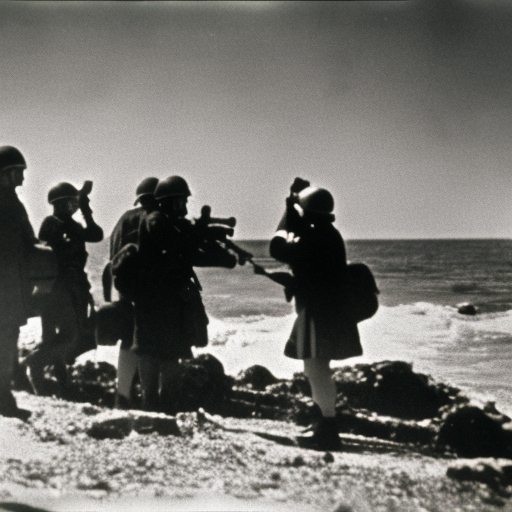Allied Invasion of Sicily: Turning the Tide in World War II
The Allied invasion of Sicily, codenamed Operation Husky, was a major military campaign during World War II that took place from July 9 to August 17, 1943. It marked a significant turning point in the war, as it was the first large-scale amphibious assault by the Allies in Europe and led to the eventual downfall of Fascist Italy.
Background:
By mid-1943, the Allies had successfully pushed Axis forces out of North Africa and were planning their next move to gain a foothold in Europe. Sicily, strategically located in the Mediterranean Sea, was chosen as the target for invasion. The island was under the control of Fascist Italy, led by Benito Mussolini, and its capture would pave the way for an assault on mainland Italy.
Preparations and Strategy:
The invasion plan was meticulously crafted by General Dwight D. Eisenhower and his staff. The operation involved a combined force of over 160,000 troops from the United States, Britain, and Canada. The plan called for a two-pronged assault, with British and Canadian forces landing in the southeast, and American forces landing in the southwest.
The Invasion:
On the night of July 9, 1943, the invasion began with airborne operations to secure key objectives and disrupt enemy defenses. Paratroopers from the 82nd and 101st Airborne Divisions were dropped behind enemy lines to seize bridges and other strategic positions. The main amphibious assault followed on the morning of July 10, with Allied troops storming the beaches of Sicily.
Resistance and Allied Advances:
The initial resistance from Italian and German forces was fierce, but the Allies quickly gained the upper hand. The British and Canadian forces made significant progress in the southeast, capturing the important port of Syracuse and advancing towards Messina. Meanwhile, the American forces faced tougher opposition in the southwest, but managed to secure a beachhead and push inland.
German Counterattacks:
Realizing the importance of Sicily, the Germans rushed reinforcements to the island to bolster the Italian defenders. They launched several counterattacks in an attempt to push the Allies back into the sea. However, the Allied air superiority and naval support played a crucial role in repelling these attacks and maintaining their positions.
The Fall of Mussolini:
As the Allied forces continued to advance, the situation in Italy became increasingly unstable. On July 25, 1943, Mussolini was overthrown and arrested by his own government. The new Italian government, led by Marshal Pietro Badoglio, began secret negotiations with the Allies for an armistice.
Victory and Legacy:
By mid-August, the Allied forces had successfully captured the entire island of Sicily. The invasion of Sicily achieved its objectives of weakening the Axis powers and opening up a new front in Europe. It also paved the way for the subsequent invasion of mainland Italy, which ultimately led to the collapse of Fascist Italy and the end of the war in Europe.
In conclusion, the Allied invasion of Sicily was a crucial military operation that marked a turning point in World War II. It demonstrated the effectiveness of large-scale amphibious assaults and set the stage for the liberation of Italy. The success of Operation Husky boosted Allied morale and laid the groundwork for future campaigns in Europe.












